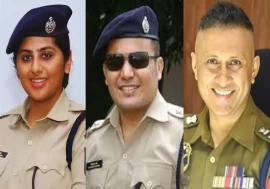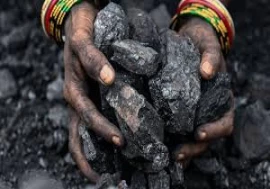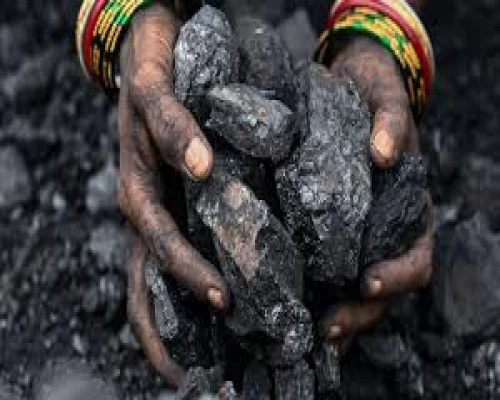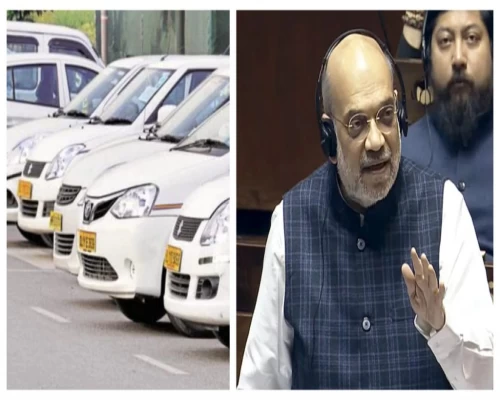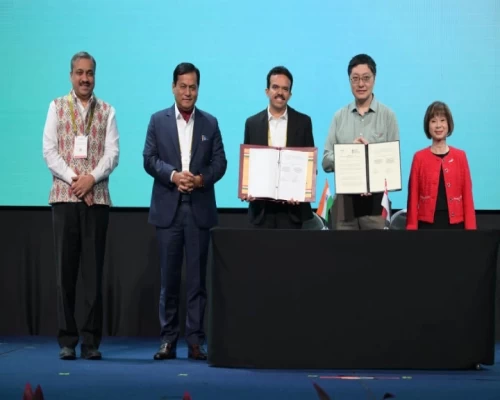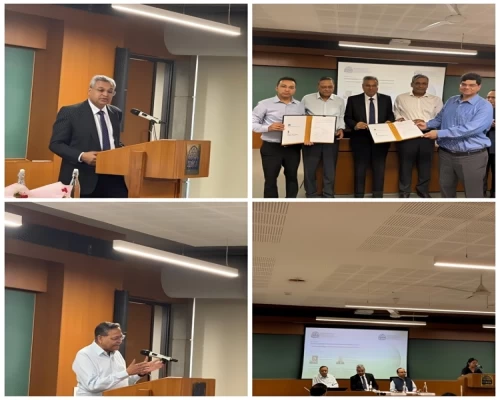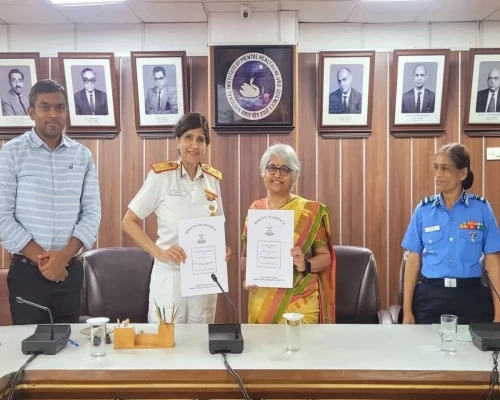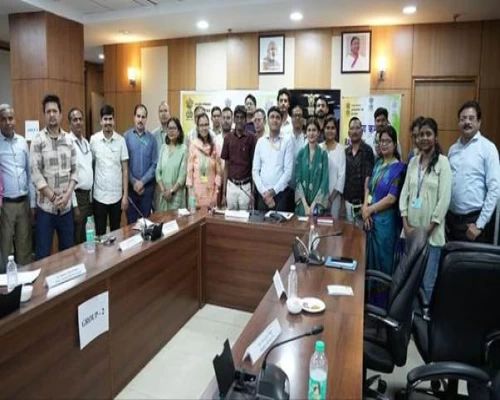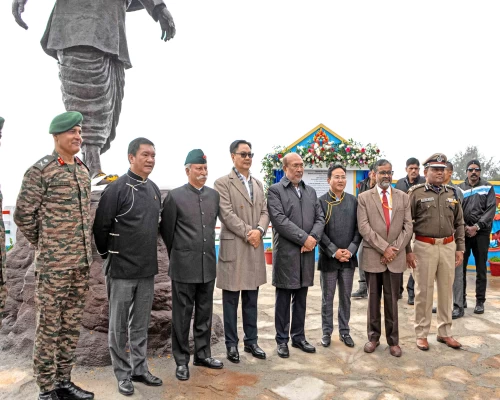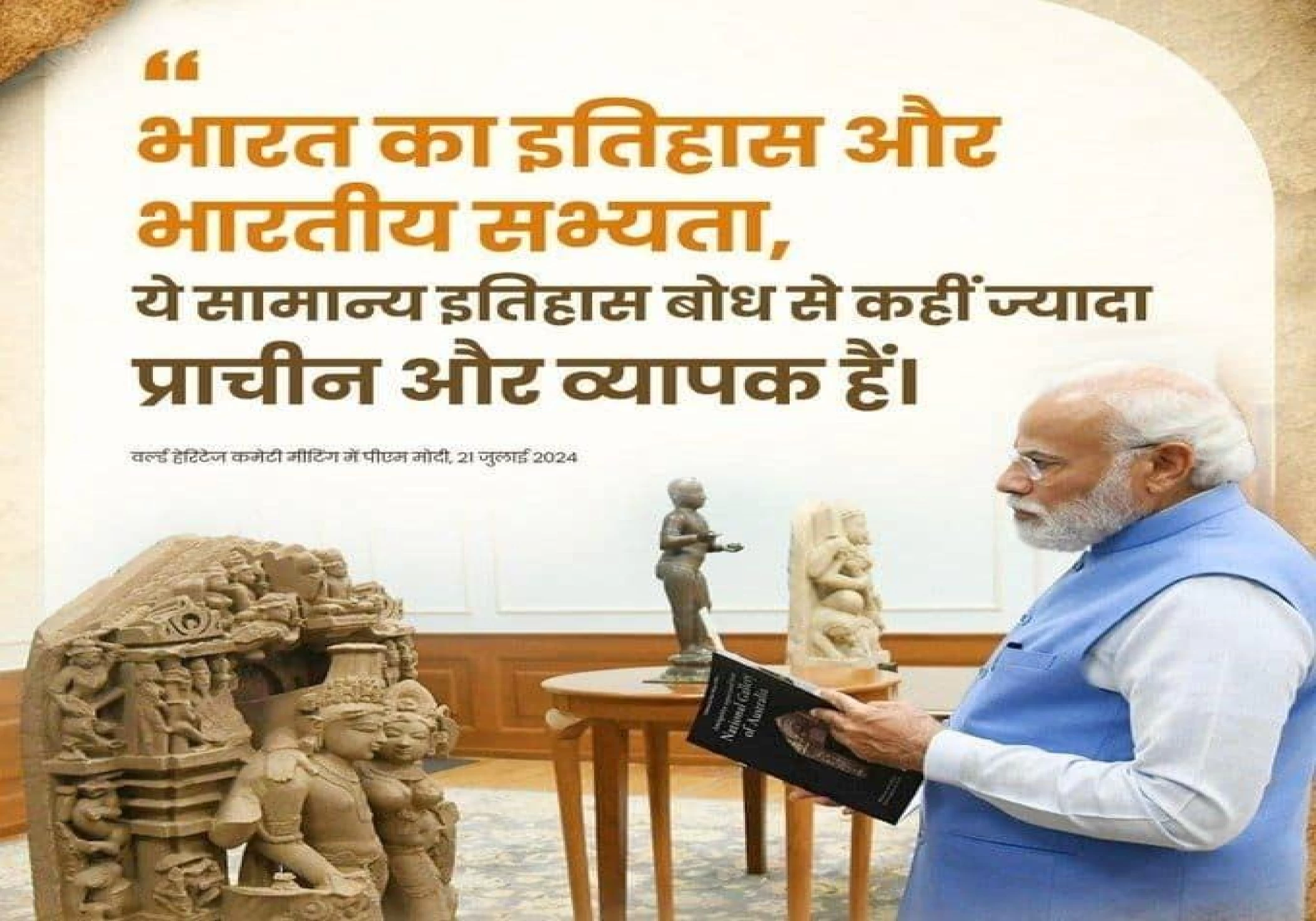
New Delhi: The Prime Minister, Narendra Modi, inaugurated the 46th Session of the World Heritage Committee at Bharat Mandapam in New Delhi on July 21, 2024. The World Heritage Committee meets annually and is responsible for managing all matters on World Heritage and deciding on sites to be inscribed on the World Heritage list. India is hosting the World Heritage Committee Meeting for the first time. The Prime Minister also took a walkthrough of various exhibitions showcased on the occasion.
Addressing the occasion, the Prime Minister noted the auspicious occasion of Guru Purnima and conveyed his best wishes to all citizens. He expressed delight that the World Heritage Committee meeting is commencing on such an auspicious day and that India is hosting the event for the first time. He extended a warm welcome to all the dignitaries and guests from around the world, especially the Director-General of UNESCO, Audrey Azoulay, and expressed confidence that the World Heritage Committee meeting will script new records in history, similar to other global meets in India.
Referring to the artifacts returned from abroad, the Prime Minister mentioned that more than 350 heritage items have been brought back in recent times. “This return of ancient heritage artifacts is a display of global generosity and respect for history,” he said. He also pointed out the growing research and tourism opportunities in the field as technology progresses.
Applauding the World Heritage Committee, the Prime Minister said that hosting this programme is a matter of pride for India. He highlighted that North East India’s historic Maidam has been nominated to enter UNESCO’s prestigious World Heritage List. “This is India’s 43rd World Heritage Site and North East India’s first heritage to gain the status of Cultural World Heritage,” he said, expressing belief that Maidam, with its unique cultural significance, will become more popular and gain more traction after securing a place on the list.
The Prime Minister said that the presence of experts from all around the world showcases the scope and capability of the Summit. He emphasised that the organisation is being hosted on the land which is one of the oldest living civilisations in the world. Noting that the world holds various centres of heritage, he shed light on India’s ancient eras and said, “India is so ancient that every point of time in the present moment is a reflection of its glorious past.” Referring to the capital of India, New Delhi, he said that it is the centre of thousands of years of heritage, and one can find heritage and history at every step of the way. He gave the example of the 2000-year-old Iron Pillar, which has been rust-resistant and offers a glimpse of India’s metallurgical prowess in the past. “India’s heritage is not merely history but also science,” he said. He also noted that India’s heritage is witness to the journey of top-notch engineering, citing the 8th-century Kedarnath temple situated at an altitude of 3500 metres, which remains a challenging place for infrastructure development today due to incessant snowfall during winter. He also touched upon the Brihadeeswara Temple in the South of India, built by Raja Chola, and its marvellous architectural layout and idol.
The Prime Minister also mentioned Dholavira and Lothal in Gujarat. Dholavira, famed for its urban planning and water management systems, dates back to 3000 BC to 1500 BC. Similarly, Lothal had remarkable planning for the citadel and lower planning and an elaborate network of streets and drainage.
He asserted, “India’s history and sense of history are older and more elaborate than the norm, leading to the need for new perspectives to witness the past with technological developments and new discoveries.” He mentioned findings in Sinauli, Uttar Pradesh, where Copper Age findings are closer to the Vedic Age rather than the Indus Valley Civilisation. He spoke about the discovery of a 4000-year-old horse-driven chariot. Such discoveries emphasise that to truly understand India, there is a need for prejudice-free new concepts, he said, inviting the gathering to be part of this new stream.
Underlining the significance of heritage, he said, “Heritage is not only history but a shared consciousness of humanity. Whenever we look at historical sites, it lifts our minds from the current geopolitical factors.” He encouraged people to use this potential of heritage for the betterment of the world, using it to connect hearts. “It is India’s clarion call to the world to come together to promote each other’s heritage and amplify the spirit of human welfare, encourage tourism, and create more job opportunities through the 46th World Heritage Committee meeting,” he added.
Recalling a time when heritage was ignored in the pursuit of development, the Prime Minister said today, India’s vision is development as well as heritage—Vikas bhi Virasat bhi. Elaborating on the pride in heritage pledge during the last 10 years, he mentioned unprecedented steps such as the Kashi Viswanath Corridor, Shri Ram Mandir, and the modern campus of ancient Nalanda University. “This resolve of India regarding heritage is linked with the feeling of serving the entire humanity. Indian culture talks about us, not just about self,” he added.
Emphasising India’s effort to be a partner in global welfare, he mentioned the global embrace of Yoga and Ayurveda, the scientific heritage of India. He also recalled the theme of the G-20 Summit hosted by India—One World, One Family, One Future. In line with India’s vision of ‘Vasudhaiva Kutumbakam,’ he touched upon the promotion of Millets and initiatives like the International Solar Alliance and Mission LiFE.
The Prime Minister reiterated that India considers the preservation of global heritage as its responsibility. That is why, he said, we are cooperating for heritage conservation in the countries of the Global South along with Indian heritage. He mentioned heritage sites like Angkor Wat in Cambodia, Cham Temples in Vietnam, and Stupa in Bagan, Myanmar, and announced that India will contribute 1 million dollars to the UNESCO World Heritage Centre to be used for capacity building, technical assistance, and conservation of world heritage sites. He underlined that this money will be useful for the countries of the Global South. He also informed that a certificate programme in World Heritage Management is being started for young professionals in India. He expressed confidence that India’s cultural and creative industry will become a significant factor in global growth.
Concluding the address, the Prime Minister urged all foreign guests and dignitaries to explore India and informed them about a tour series for iconic heritage sites for their convenience. He expressed confidence that their experiences in India would make for a memorable trip.
Union Minister for External Affairs, S. Jaishankar, Union Minister for Culture and Tourism, Gajendra Singh Shekhawat, Director-General of UNESCO, Audrey Azoulay, and Chairperson of the World Heritage Committee, Vishal Sharma, were present on the occasion, among others.
Background
India is hosting the World Heritage Committee Meeting for the first time. It takes place from July 21 to 31, 2024, at Bharat Mandapam in New Delhi. The World Heritage Committee meets annually and is responsible for managing all matters on World Heritage and deciding on sites to be inscribed on the World Heritage list. During this meeting, proposals for nominating new sites on the World Heritage list, State of Conservation reports of 124 existing World Heritage properties, International Assistance and Utilisation of World Heritage Funds, etc., will be discussed. The meeting will be attended by more than 2000 international and national delegates from over 150 countries.
Along with the World Heritage Committee Meeting, the World Heritage Young Professionals’ Forum and World Heritage Site Managers’ Forum are also being held on the sidelines.
Further, various exhibitions are being set up at Bharat Mandapam to showcase India’s culture. The Return of Treasures Exhibition showcases some of the retrieved artefacts brought back to the country. So far, more than 350 artefacts have been brought back. AR & VR technologies are also being used to provide an immersive experience for three World Heritage sites of India: Rani ki Vav, Patan, Gujarat; Kailasa Temple, Ellora Caves, Maharashtra; and Hoysala Temple, Halebidu, Karnataka. An ‘Incredible India’ exhibition is also being set up to highlight India’s rich cultural heritage, age-old civilisation, geographical diversity, and tourism destinations along with modern developments in the fields of Information Technology and infrastructure. /BI


